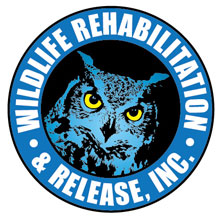My goal in rehabbing is always to have the wildlife go back to living in the wild. That’s what they want and where they belong. Before release, I want to be certain each individual has the capability to survive. Preparing and testing those capabilities varies by species. The raptors, including owls and hawks, take the most effort.
When raptors have demonstrated they can fly, I move them to a longer cage so that they have more room. Once they are settled, I check to see that they can perch. While that may sound basic, I have found that sometimes they are not perching. If they cannot perch, they cannot look for food and eat what they have found.
After I am assured they can perch, I begin to practice endurance flying. To do that, I walk up to the bird. When I get too close, the bird flies. I follow the bird and repeat walking up to it. We continue through this process until the bird has flown the distance I want for that day. The next day we repeat the exercise, increasing the distance as the bird improves. Eventually I prompt the bird to fly the length of the flight cage two to three dozen times in one session. That’s how I get my exercise!
At that point, the bird starts to dive bomb me. Then I know it is ready for release. In step 3 I’ll share how the release happens.
Thanks for caring about the critters,
Patti
